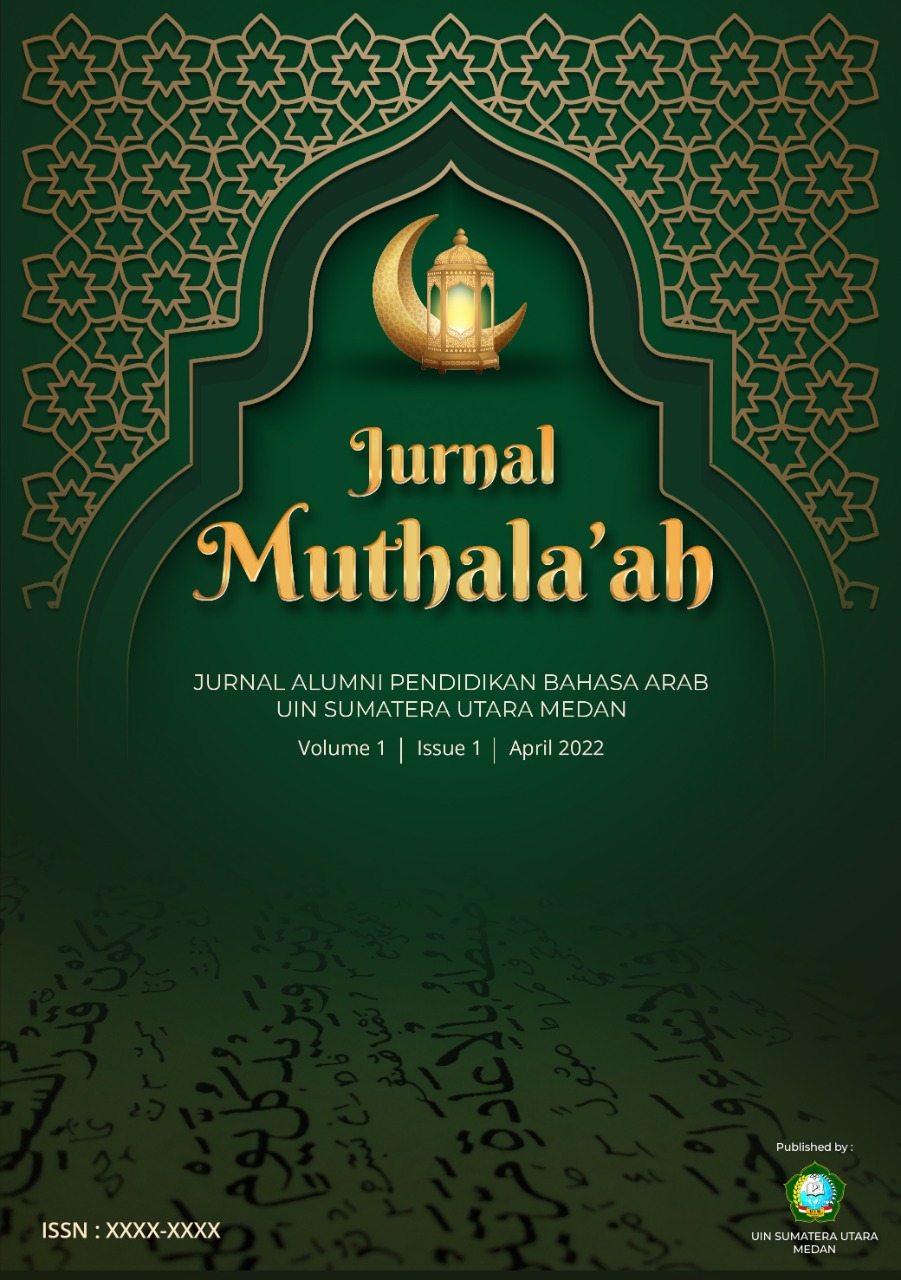PENERJEMAHAN “DHOMIR ILAHI” DALAM HADIS: ANALISIS KESEPADANAN LAZIM DAN METODE KOMUNIKATIF PADA HADIST NABI MUHAMMAD SAW
Keywords:
Divine Dhomir, Common Equivalence, Communicative MethodAbstract
This study aims to analyze the translation of divine dhomir in the hadith of the Prophet SAW with a focus on the common equivalence and communicative methods used by translators in Indonesian. Translation of hadith is not just a process of translating, but also an effort to maintain the integrity of the divine message contained in the text. Therefore, choosing the right translation strategy is important, especially when dealing with Arabic grammatical elements such as divine dhomir which often contain theological content. This study uses a descriptive qualitative method with data in the form of three hadiths of the Prophet SAW which contain a lot of divine dhomir, namely the hadith about Allah's forgiveness to the children of Adam, the hadith about Allah accepting repentance during the day and night, and the hadith about Allah descending to the sky of the world in the last third of the night. The data were obtained through documentation studies, then analyzed to see the translation patterns used. The results of the study show that in translating divine dhomir, translators generally choose common equivalences such as the use of the suffix -Ku or Aku to maintain the sacredness and intimacy of the Indonesian religious language. However, in several contexts that have the potential to cause misunderstandings of faith, the communicative method is also applied with additional explanations. This reflects the translator's caution in maintaining the purity of monotheism when translating the hadith.
References
Al Farisi, M. Z. (2011). Pedoman penerjemahan Arab-Indonesia. Bandung: PT Remaja Rosdakarya.
Djajasudarma, T. F. (2010). Metode linguistik. Bandung: Refika Aditama.
Hidayatullah, S. (2017). Jembatan kata: Seluk beluk penerjemahan Arab-Indonesia. Jakarta: Grasindo.
Khasanah, A., Nasution, N. F., & Hizbullah, N. (2020). Kritik terjemahan Arab-Inggris konten ideologis Islam dalam film Bilal: A New Breed of Hero. Berajah Journal: Jurnal Pembelajaran dan Pengembangan Diri, 2(4), 207–218. https://doi.org/10.47353/bj.v2i4.167821
Mahsun. (2017). Metode penelitian bahasa: Tahapan, strategi, metode, dan tekniknya. Depok: Raja Grafindo Persada.
Moleong, L. J. (2010). Metodologi penelitian kualitatif. Bandung: Rosdakarya.
Molina, L., & Hurtado Albir, A. (2002). Translation techniques revisited: A dynamic and functionalist approach. Meta, 47(4), 498–512. https://doi.org/10.7202/008033ar
Newmark, P. (1988). A textbook of translation. Prentice Hall.
Pelawi, B. Y. (2019). Translation methods in translating idiomatic words from English into Indonesian film subtitles. Jurnal Ilmu dan Budaya, 41(61), 7171–7188.
Septiaji, A. (2019). Metode penerjemahan dalam menerjemahkan novel The Old Man and the Sea ke Lelaki Tua dan Laut karya Ernest Hemingway. Jurnal Pendidikan Bahasa dan Sastra Indonesia, 2(2), 35–46.
Shidiq, A. F., & Malik, A. (2015). Teknik dan metode penerjemahan kalimat tanya pada subtitle serial TV Shalahuddin Al-Ayyubi versi MNCTV. Center of Middle Eastern Studies (CMES): Jurnal Studi Timur Tengah, 8(2).
Suryawinata, Z., & Hariyanto, S. (2003). Translation: Bahasan teori dan penuntun praktis menerjemahkan. Yogyakarta: Kanisius.
Yuda, J. P., Nababan, M., & Djatmika. (2020). Teknik penerjemahan peristiwa tutur bertengkar dalam subtitle film Ted 2. Aksara, 32(1), 151–166. https://doi.org/10.29255/aksara.v32i1.435.151-166
Downloads
Published
Issue
Section
License
Copyright (c) 2025 Elshandy Surya Pratama, Furkon Firjatullah, Kamilatun Nazila

This work is licensed under a Creative Commons Attribution-ShareAlike 4.0 International License.






